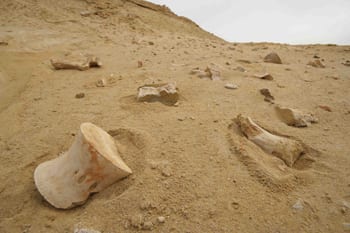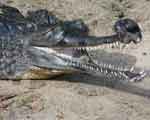National Geographic has launched its new Explorers web site, which includes SMU paleontologist Louis L. Jacobs.
The Explorers site acknowledges the work of the world’s scientists whose research is made possible in part through funding from National Geographic.
In a video description of the site, National Geographic explains: “In 1888 a club was formed, with a mission to explore. Today that spirit lives on in a new generation of National Geographic explorers. Innovative thinkers who redefine exploration. Living the mission and making the world a better place.”
A professor in Dedman College‘s Roy M. Huffington Department of Earth Sciences, Jacobs joined SMU’s faculty in 1983.
Currently his field projects include work in Mongolia and Angola. His book, “Lone Star Dinosaurs” (1999, Texas A&M University Press) was the basis of an exhibit at the Fort Worth Museum of Science and History that traveled the state. He consulted on the new exhibit, Mysteries of the Texas Dinosaurs, which opened in 2009.
Jacobs co-leads Projecto PaleoAngola, a collaborative international scientific research program focused on the ancient life of Angola.
Besides the discovery of the first dinosaur of Angola, the team has uncovered mosasaurs, plesiosaurs, turtles and other Cretaceous marine animals, but the aim is also to create a strong and lasting institutional and scientific collaboration that has a multiplier effect in Angolan academia.
In the laboratory, Jacobs’ research utilizes advanced imaging and stable isotope techniques to investigate paleoenvironmental, biogeographic and phylogenetic issues of the Mesozoic and Cenozoic eras.
Read the National Geographics’ Q&A with Jacobs.
EXCERPT:
What did you want to be when you were growing up?
I always wanted to be a scientist. I did not care what kind because I liked it all. Looking back, although neither of my parents was a scientist, I think they guided me when I was young and I never got off the track. I am very grateful for that.How did you get started in your field of work?
I always liked the out-of-doors and I liked everything about animals. As a kid, we had a retired geologist as a neighbor who taught me about fossils and showed me how to tie a diamond hitch on a pack mule using a sawhorse. As an undergraduate, I was most interested in the physiology of invertebrates, such as deep-sea vent worms, which were just being discovered at the time. When I went to graduate school, I decided that the most important subject for me is evolution, the unifying concept that links disparate facts about life into a coherent whole. I studied paleontology because fossils link Earth and life, and you can hold them in your hand. I still get a thrill every time I do. I was guided in paleontology by Everett Lindsay, George Gaylord Simpson, and Edwin Harris Colbert.What inspires you to dedicate your life to vertebrate paleontology?
There is no more all-encompassing science than paleontology because no other subject melds life and Earth in such multifaceted and grand ways. Almost every technique used to study life today, and almost every technique used to study Earth, has an application in paleontology. It is ever refreshing and always interesting because the evolution of life on Earth ultimately leads to us and to all other species living here and now. Thus, our understanding of the relationships between Earth and the life it bears is fundamentally important to our future.What’s a normal day like for you?
Every day is a collection of new challenges.Do you have a hero?
Every person who does the best that can be done with honor and dignity is my hero.What has been your favorite experience in the field? The most challenging?
My favorite experience is usually the one I am having at the time. Most recently it was standing in southern Angola, my feet set on the crystalline rocks of the African continent, looking west over the fault that marked the edge of the rift valley that widened during the past 100 million years to become today’s South Atlantic Ocean. It is like being part of the most obvious icon in earth sciences, the breaking of the puzzle-like fit of South America and Africa. We, Projecto PaleoAngola, are the first paleontologists to look at the coast of Angola with “plate-tectonic eyes,” to collect beautiful fossil vertebrates in abundance, and to investigate the history of life along the shores of this growing ocean.
Read the National Geographics’ Q&A with Jacobs.
SMU is a nationally ranked private university in Dallas founded 100 years ago. Today, SMU enrolls nearly 11,000 students who benefit from the academic opportunities and international reach of seven degree-granting schools. For more information see www.smu.edu.
SMU has an uplink facility located on campus for live TV, radio, or online interviews. To speak with an SMU expert or book an SMU guest in the studio, call SMU News & Communications at 214-768-7650.


 Public health insurance provides insured infants better, less costly care than private plans
Public health insurance provides insured infants better, less costly care than private plans A mathematical model determines which nations are more stable and which are more likely to break up
A mathematical model determines which nations are more stable and which are more likely to break up Indian, Vietnamese immigrants become American over time through civic activities, say anthropologists
Indian, Vietnamese immigrants become American over time through civic activities, say anthropologists


